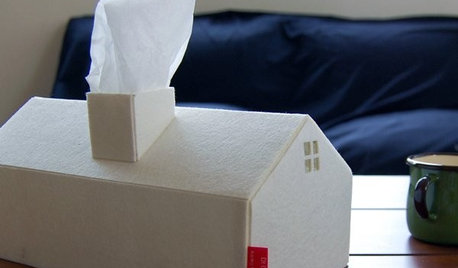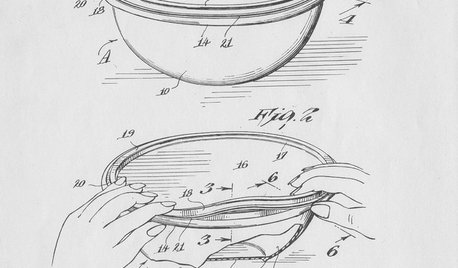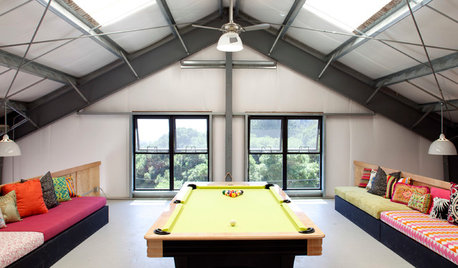Not doing anything
grow1ingess1es
12 years ago
Related Stories

PRODUCT PICKSGuest Picks: Anything-but-Average Tissue Box Covers
Tissue boxes are nothing to sneeze at when flu season hits. These fun covers bring a smile and make a statement
Full Story
DECORATING GUIDESBulletproof Decorating: Upholstery That Stands Up to Anything
Kids and pets are no match for fabrics as durable as these, which meet higher style standards than ever
Full Story
FEATURESHow Tupperware’s Inventor Left a Legacy That’s Anything but Airtight
Earl S. Tupper — and his trailblazing marketing guru, Brownie Wise — forever changed food storage. His story is stranger than fiction
Full Story
BEFORE AND AFTERSLiving Area Lightened Up and Ready for Anything
Porcelain tile and outdoor fabrics prepare this lakeside home for the challenge of pets and kids
Full Story
BASEMENTS10 Ideas for an Anything-but-Boring Basement
Let your imagination run wild and get the most bang from your basement
Full Story
COFFEE WITH AN ARCHITECTHow to Design Anything
Keep this simple guide handy when you're undertaking a challenging project
Full Story
TRADITIONAL HOMESHouzz Tour: Historic London Home That’s Anything but Stodgy
A giant giraffe, striking art and other playful touches add a lively touch to this grand terraced apartment
Full Story
LIFEYou Said It: ‘What Do You Want Your Deck to Do?’ and More Quotables
Design advice, inspiration and observations that struck a chord this week
Full Story
MORE ROOMSWhat Would You Do With an Extra Room?
Be a rock star, a crafting star, a movie mogul. But whatever you'd choose for your spare room, don't let reality stop you
Full Story
GARDENING GUIDES10 Tips to Start a Garden — Can-Do Ideas for Beginners
Green up your landscape even if you're short on time, money and knowledge, with these manageable steps for first-time gardeners
Full Story





mdahms1979
grow1ingess1esOriginal Author
Related Professionals
Lyons Landscape Architects & Landscape Designers · Brentwood Landscape Contractors · Elgin Landscape Contractors · Pottstown Landscape Contractors · Bloomington Landscape Contractors · Bowie Landscape Contractors · Fair Oaks Landscape Contractors · Goodlettsville Landscape Contractors · Nutley Landscape Contractors · San Carlos Park Landscape Contractors · Tavares Landscape Contractors · Uxbridge Landscape Contractors · Weymouth Landscape Contractors · Aurora Driveway Installation & Maintenance · Parker Driveway Installation & Maintenancebanannas
greenman28 NorCal 7b/8a
mdahms1979
theplanthoarder
puglvr1
eileen44_gardener
greedygh0st
RainforestGuy
eileen44_gardener
greedygh0st
greedygh0st
eileen44_gardener
pirate_girl
RainforestGuy
greedygh0st
greedygh0st
RainforestGuy
pirate_girl
greedygh0st
grow1ingess1esOriginal Author
RainforestGuy
greenman28 NorCal 7b/8a
grow1ingess1esOriginal Author
mdahms1979
grow1ingess1esOriginal Author
mdahms1979